
On the 20th of July 2024, students from Army Public School, part of the Media Masterclass Program of Saksham Sanchar Foundation, embarked on an educational journey to the Maharaja Sawai Man Singh II Museum in Jaipur. This visit, organized in collaboration with the Army Wives Welfare Association (AWWA), aimed to provide students with a firsthand look into Jaipur’s rich history and cultural heritage.
During their visit, the students explored Rath Khana, a unique museum inside the City Palace dedicated to royal carriages and palanquins. This section showcases a remarkable collection of vintage carriages, European cabs, old palanquins, and chariots used by the Jaipur royal family for ceremonial occasions and daily transportation.
Highlights of Rath Khana
Royal Carriages: The museum houses various royal carriages, including the famous Victoria Baggi. This elaborate carriage is adorned with intricate designs and gold plating, highlighting the opulence of the Jaipur royalty.
Historical Significance: Each exhibit in Rath Khana provides insights into the luxurious lifestyle and rich cultural heritage of the Jaipur royalty. The carriages and palanquins showcase the craftsmanship and artistry of the period.
Ceremonial Carriages: Notable exhibits include the Gold Plated Livery, used for grand processions and important state occasions. These carriages were often drawn by well-decorated horses, adding to the spectacle.
European Influence: The collection also includes European cabs, reflecting the influence of Western styles and designs on Indian royalty during the British colonial period.
Suit of Elephant Armour: This magnificent suit, dating back to the early 20th century, features molded silver ornamentation and hundreds of metal plates and chain mail stitched on. It was worn by elephants during wars and special events.
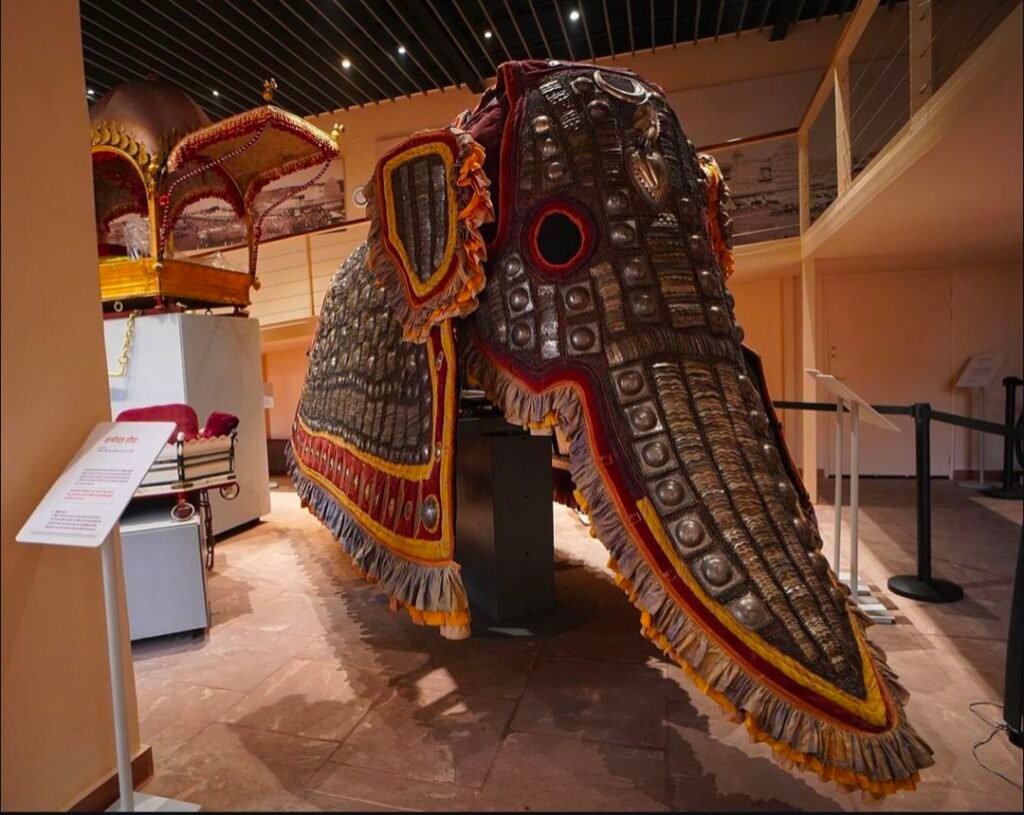
Takht-E-Rawaan: A portable throne used to transport the ruler on special occasions, this transport is embellished with gold and silver accents in an effect known as ‘Ganga-Jamuni’.
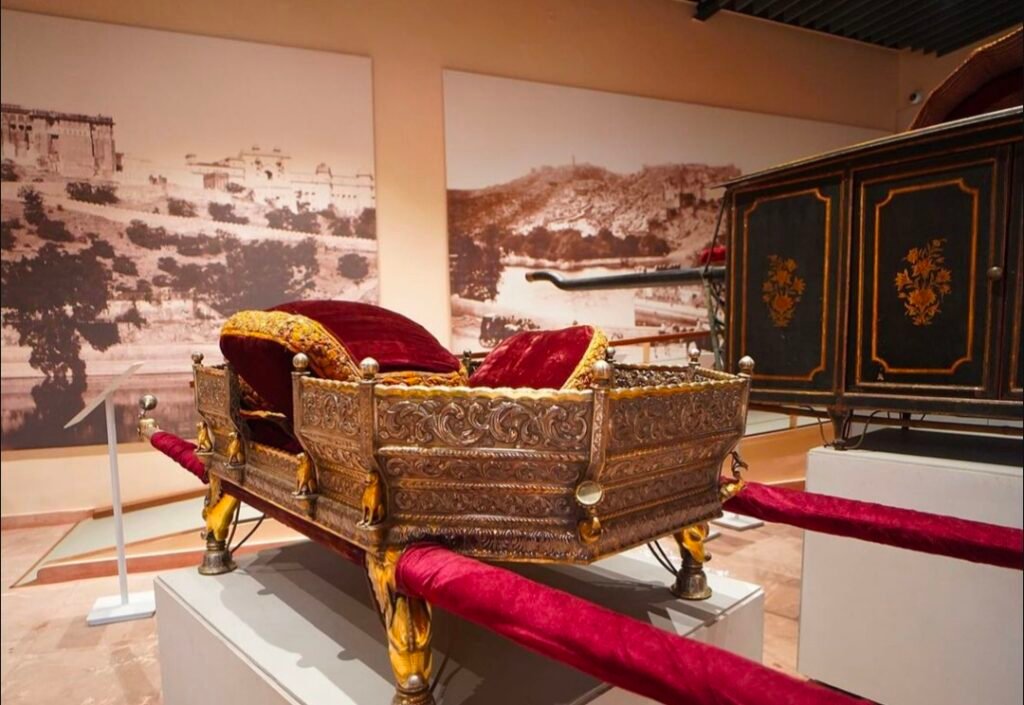
Jal Jhulni Boat: Made of wood, metal, and cloth, this boat was used on the auspicious occasion of Jal Jhulni Ekadashi to take an idol of Lord Krishna for a boat ride on Talkatora Lake, near the City Palace. The boat-shaped palanquin, made in the 19th century, is coated in gold.
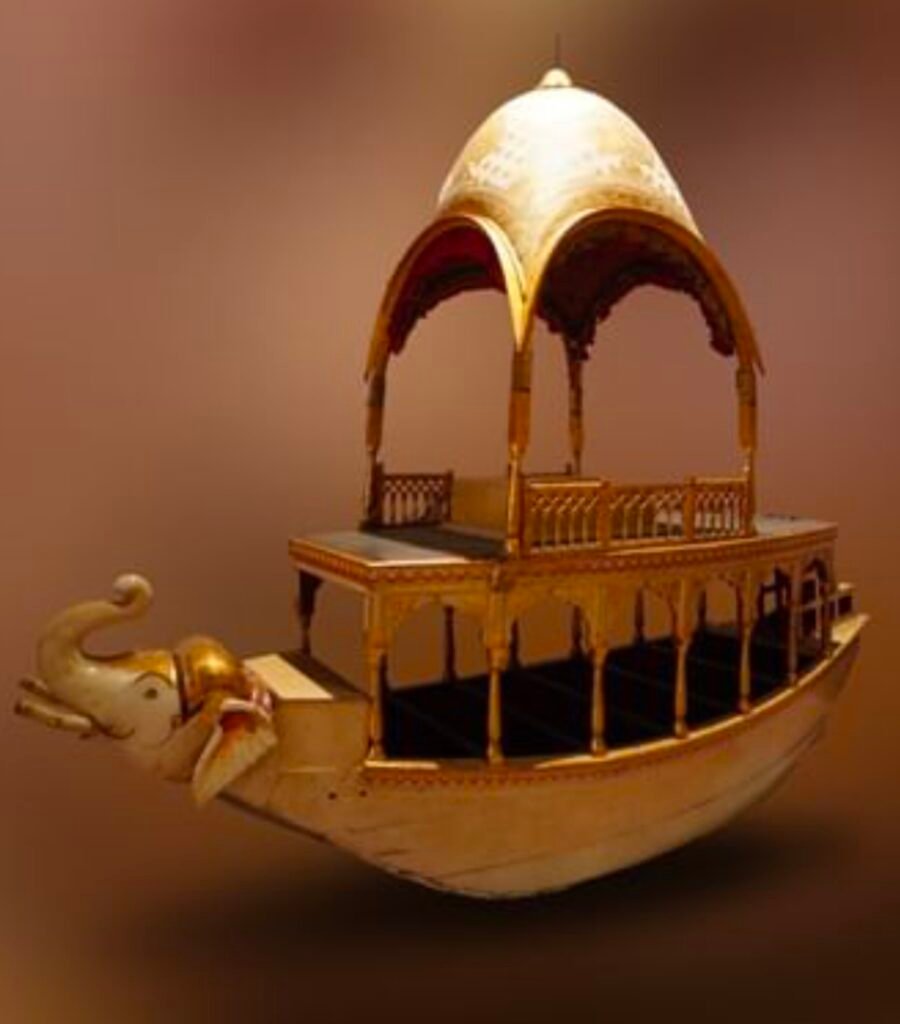
Maharaja Sawai Madho Singh II’s Buggy: This buggy was a favorite of Maharaja Sawai Madho Singh II and was used by Maharaja Sawai Man Singh II for his Silver Jubilee celebrations in 1947. One notable baggi, made in the 20th century, was a favorite of Maharaja Sawai Man Singh II. This modern carriage featured electrical lamps, beautiful glasswork with embroidered flowers, and comfortable seating with yellow accents. So proud was the Maharaja of this baggi that he used it to go the event for his silver jubilee celebration in it instead of a car.
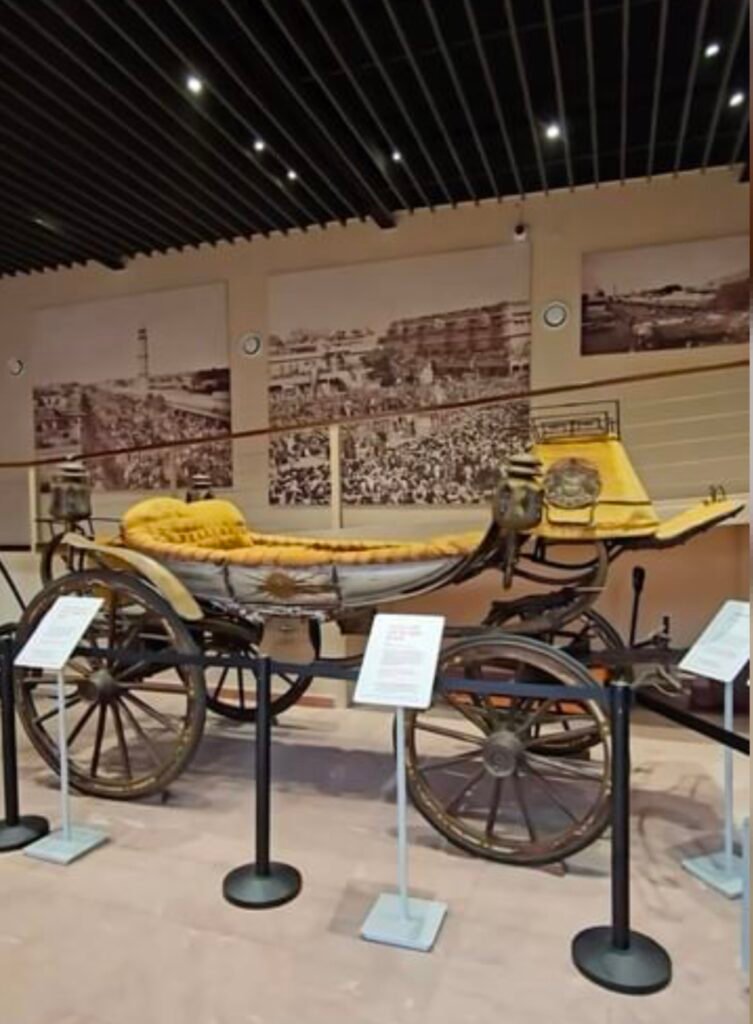
Silver Cart: This 18th-century hand-drawn cart, made of silver on wood, epitomizes luxury and is decorated with floral motifs. It was used to carry the toys of the Rajkumar (prince).
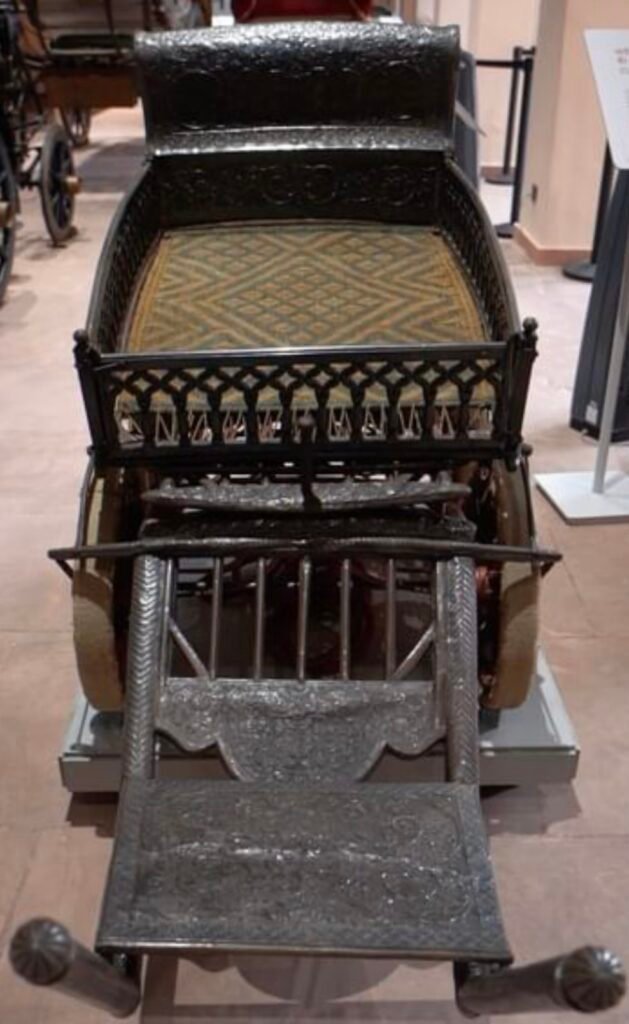
Victorian Buggy: This buggy, believed to be a gift from Queen Victoria to Maharaja Sawai Ram Singh II of Jaipur, is a must-see exhibit. With no space for a coachman, it was pulled by a pony with the reins in the hands of its occupant. The complex front axle made it easy to maneuver. It is believed to have been received in 1876 during the visit to Jaipur by Albert Edward, the Prince of Wales.

Visiting Rath Khana
Visitors to Rath Khana can glimpse the opulence and grandeur of the past, as well as the evolution of transportation methods used by the royals. Baggi Khana is situated within the City Palace complex in the heart of Jaipur. The City Palace, including Baggi Khana, is generally open to visitors from 9:30 AM to 5:00 PM. Entrance to Baggi Khana is included in the City Palace ticket, with various ticket options available, including combined tickets offering access to multiple sections of the palace. Photography is prohibited in the area, ensuring the preservation of these historic artifacts.
Through this visit, students gained valuable insights into the history and royal life of Jaipur’s Rajas and Ranis, enriching their understanding of India’s cultural heritage.

